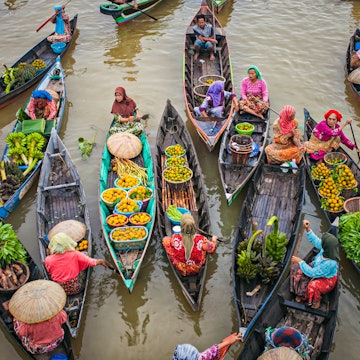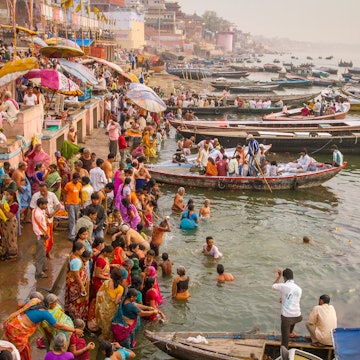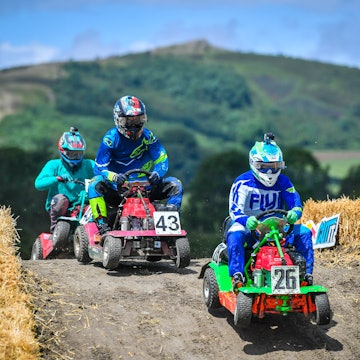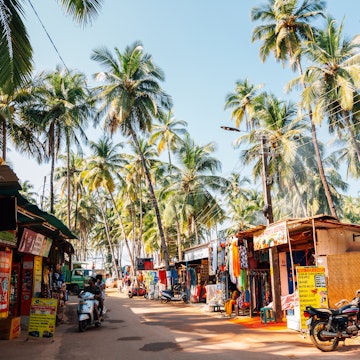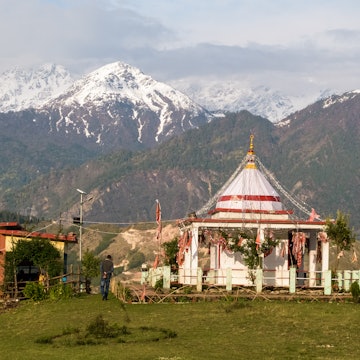

Surfing off the shores of Varkala in Kerala, India. Wirestock Creators/Shutterstock
With over 7400km of mostly untouched coastline, India is quietly emerging as a promising surfing destination. Granted, it won’t serve up the reef breaks of Bali or the towering swells of Sri Lanka, but what it lacks in epic drama, it makes up for with long, open beaches, consistent swells, and waves that are surprisingly friendly to beginners and intermediates.
The east coast steals the show, courtesy of regular storms in the Bay of Bengal and the vast Indian Ocean. Think point breaks at Visakhapatnam, or beginner havens like Puducherry (Pondicherry) and Mamallapuram (Mahabalipuram) in Tamil Nadu. Down south, Kovalam and Varkala remain firm favorites, with mellow swells perfect for longboarders and first-timers finding their feet.
For those chasing bigger thrills, the monsoon season (June to October) delivers waves in the 8-to-12ft range. But it’s not just about size, it's about freedom. With far fewer crowds and barely any tourist traps, India serves up empty waves in stunning coastal backdrops. Read on for the lowdown on when and where to catch your next ride.
Mulki, Karnataka
By day, they ride waves; by night, they cast nets. In India, many local surfers are fishers whose bond with the sea runs deep. But organized surfing as a sport only began making waves here in the early 2000s, slowly transforming quiet coastal towns into welcoming surf spots.
Mulki, just half an hour north of Mangaluru (Mangalore), is where India’s surf story began. In 2004, American “surfing swami” Jack Hebner launched the country’s first surf school, Mantra Surf Club, affectionately known as the surfing ashram. A short boat ride across the Shambhavi River brings you to Sasihithlu Beach, an underrated gem where gentle 2–3ft waves make for easygoing sessions. Mornings are calm, crowds are sparse, and the water ranks among South India’s cleanest, thanks to regular local clean-up drives. Travelers are encouraged to pitch in and help keep it that way.
Where to try it: Mantra Surf Club runs ISA-certified courses from three to 30 days, plus board rentals and coaching that’ll have you popping up in no time. Onsite, the Ashram Surf Retreat serves up comfy stays, a riverside cafe, yoga, kayaking and stand-up paddling to round out the chill vibe. The best time to visit is mid-September to May, when the waves are friendly and the weather’s just right.
Kodi Bengre, Karnataka
Meet Kodi Bengre, a palm trees-studded, laid-back coastal village near Udupi that’s fast earning a reputation as the country’s surfing sanctuary. The real star of the show? The waves. With consistent, sandy-bottom breaks, it’s a top spot everyone from first-timers finding their sea legs to seasoned surfers chasing smooth rides. Plus, the lack of crowds means you can actually focus on your pop-up without dodging elbows.
Where to try it: For the full chill-and-thrill experience, Shaka Surf Club has you covered. Think camping-style tents, three hearty meals, surf and skateboard lessons, and even kayaking when you need a break from the board. Aim to visit in October to March, when the waves are reliably rideable and the vibe is just right.
Mamallapuram (Mahabalipuram), Tamil Nadu
Surfing with a side of ancient heritage? Mamallapuram offers exactly that. About 20 minutes down the Tamil Nadu coast from Chennai (Madras), this quiet spot is best known for its right-hand point breaks near the iconic Shore Temple, whose centuries-old boulders jut into the Bay of Bengal, and when conditions line up, they create unexpectedly fun waves.
Pro tip: Hit the water early in the morning when the sea’s glassy and the breeze is still snoozing.
Where to try it: Mumu Surf India is run by local Mukesh and his wife Anna, who know these waves like the back of their hands. The school offers ISA-certified lessons right on Main Beach, making it super easy to get started. January to March is ideal for beginners; from April onwards (especially June through September), the swells step up for more confident surfers.
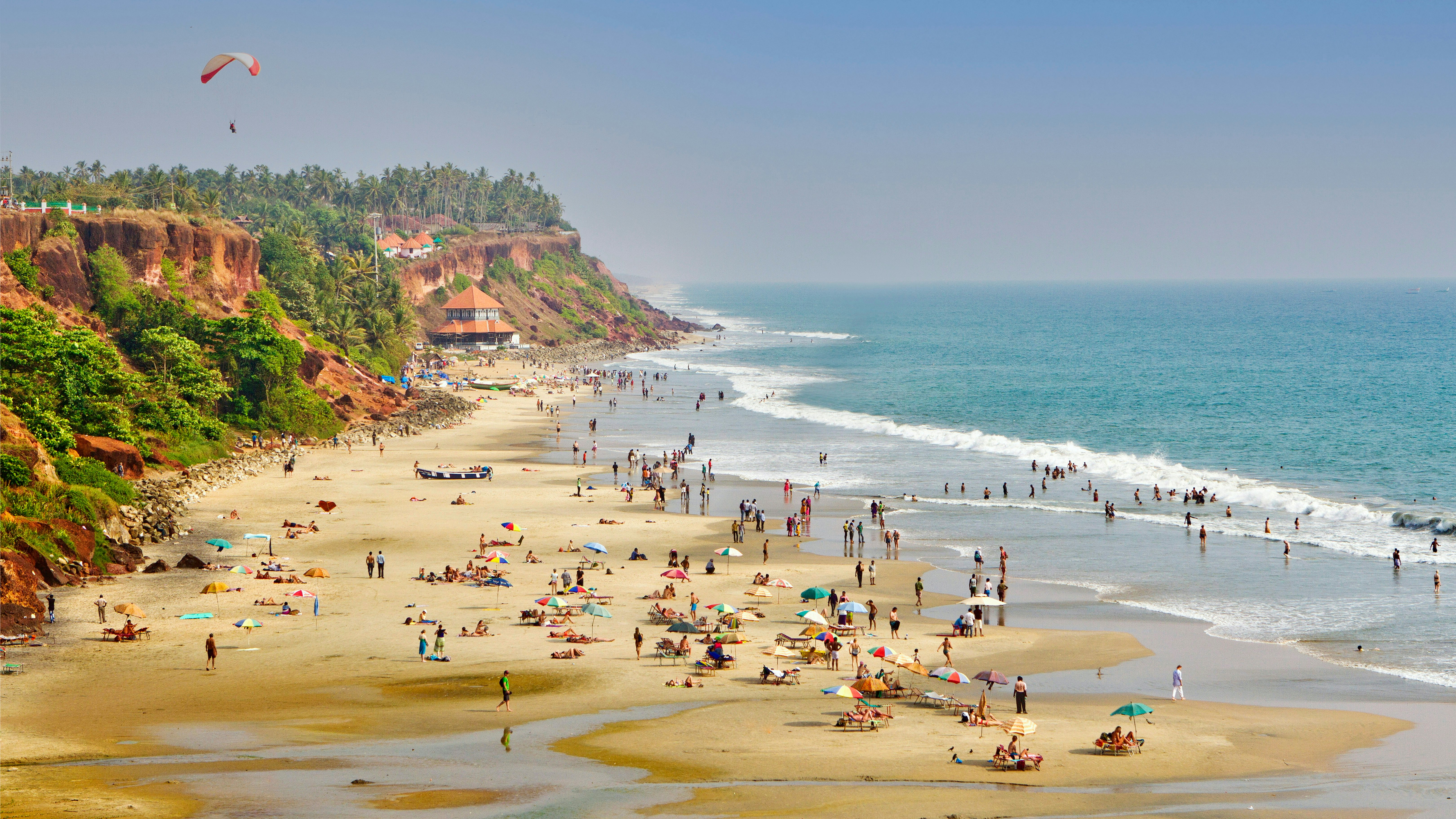
Varkala, Kerala
If you’re after chill vibes, clean waves, and hardly a crowd in sight, Varkala is your go-to. Nestled on Kerala’s Arabian Sea coast, just 50km north of Thiruvananthapuram (Trivandrum), it’s the perfect low-key surf escape for beginners and those looking for mellow waves to fine-tune their skills. A mix of long golden beaches and rocky point breaks deliver consistent chest-high swells all year round.
Want forgiving, mushy waves to master your pop-up? You’ve got it. Feeling bolder? Kappil and Edava Beach dish out logger rides and the occasional head-high set for when you’re ready to step up.
Where to try it: Point Break Varkala sits just 100m from Black Beach, with Varkala Beach and Edava Beach a short stroll away. Think comfortable beach stays, plus homestyle Indian and continental breakfasts that hit the spot after a morning session. There’s no bad time to visit, but surf season here runs between October and May, with November to March offering the best conditions.
Puducherry (Pondicherry)
Sure, Puducherry is famous for its colonial vibes, colorful cafes, and laid-back charm, but the real fun happens at Serenity Beach. Thanks to two piers built after the 2004 tsunami, the Bay of Bengal here dishes out gentle, beginner- and intermediate-friendly waves that are ideal for trying your first pop-up or brushing up your skills. Paradise Beach and Auroville Beach are also worth a visit, drawing a mix of local surfers and travelers chasing easygoing swells without the crowds.
Mark your calendars from June to February, when offshore winds, steady swells, and pleasant weather combine to make Puducherry the east coast’s hidden surf playground.
Where to try it: Kallialay Surf School, set up in 2009 by Spanish brothers Juan and Samai Reboul, was one of India’s first surf schools on the east coast. It's got everything you need – boards, equipment, expert coaching – so all you have to do is show up in swimwear and a sense of adventure. Choose from a quick session or a full 15-day course.
Kovalam, Tamil Nadu
An hour’s drive from Chennai, Kovalam (colloquially known as Covelong) is a surfing gem on India’s east coast. This small coastal village offers a mix of gentle cove waves perfect for beginners, along with more challenging point breaks for seasoned riders. Unlike the crowded west coast, Kovalam has a relaxed vibe and consistent waves year-round, with August to March deemed particularly popular.
Where to try it: Bay of Life Surf School is the place to learn, offering structured courses in surfing, kayaking and stand-up paddleboarding for all levels. The 2011-established school – the first Accredited Surf School in Tamil Nadu – stands out for its inclusive approach, having pioneered adaptive surf camps for people with cerebral palsy. Equipment ranges from beginner-friendly soft-top boards to performance-grade epoxy models. While the surf school doesn’t offer accommodations, the area is dotted with Airbnbs and resorts to retreat to after a long day at the beach.
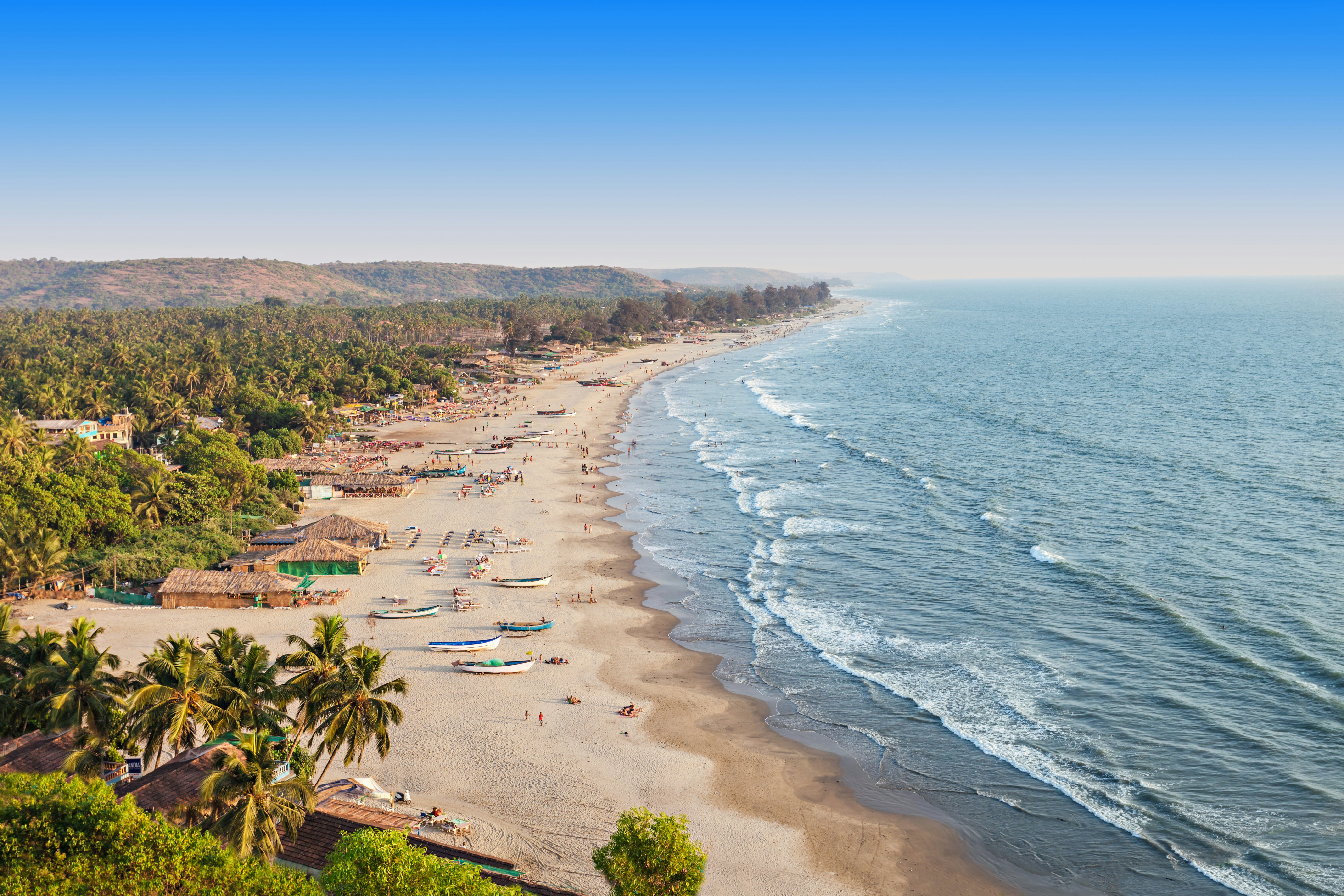
Arambol, Goa
Goa isn’t just about beach parties and sunsets – it’s quietly building a reputation as one of India’s top surf spots. Those on the hunt for a chill surf spot with zero pretension needn’t look any further than Arambol Beach, arguably the best place to surf in North Goa. The beach break works best in the 2–5ft range, offering clean A-frame sets that are excellent for beginners and longboarders. Rights tend to hold up better and sometimes even get hollow, offering a chance to duck dive your way to a little extra thrill. The lefts are softer and crumbly and work well for practicing pop-ups or longboard trims without too much fuss.
Where to try it: Surf Wala, started by a group of international surfers in 2011, has helped put Arambol on the surf map. Expect laid-back multiday courses, gear rentals, comfy stays, and a cafe where you can swap surf tales over chai or something stronger. Lessons run in English and Hindi, with a few Russian instructors too. Plan your trip between October and March, when the swells are steady and the waves play nice.
Agonda, Goa
If you’re chasing perfect waves, South Goa isn’t exactly India’s surf capital. But tucked away in this serene stretch of coastline, Agonda Beach quietly holds its own. With punchy little peaks rolling in along the 3–5ft range and light easterly winds, it’s the most consistent surf spot in the south, especially at the northern end of the bay where the swell picks up before the coast narrows.
Expect gentle, fun waves that don’t demand high skill but do require a high-volume board and an even higher dose of good vibes. After all, Agonda might just be one of the happiest places you’ll ever surf. October to March is the best time to visit, when swells are at their most reliable.
Where to try it: Aloha Surf India was founded in 2014 by fisherman and one of India’s pioneer surfers, Velu, and his friend Poorna, making it South Goa’s first surf school. Alongside lessons and board rentals, they’ve built a friendly, inclusive space that’s as much about community and the sea as it is about catching waves. While there is no dearth of accommodations in the vicinity, Aloha is in the midst of opening a second surf school with stays (and transfers) in Rajbagh, just 20 minutes away.
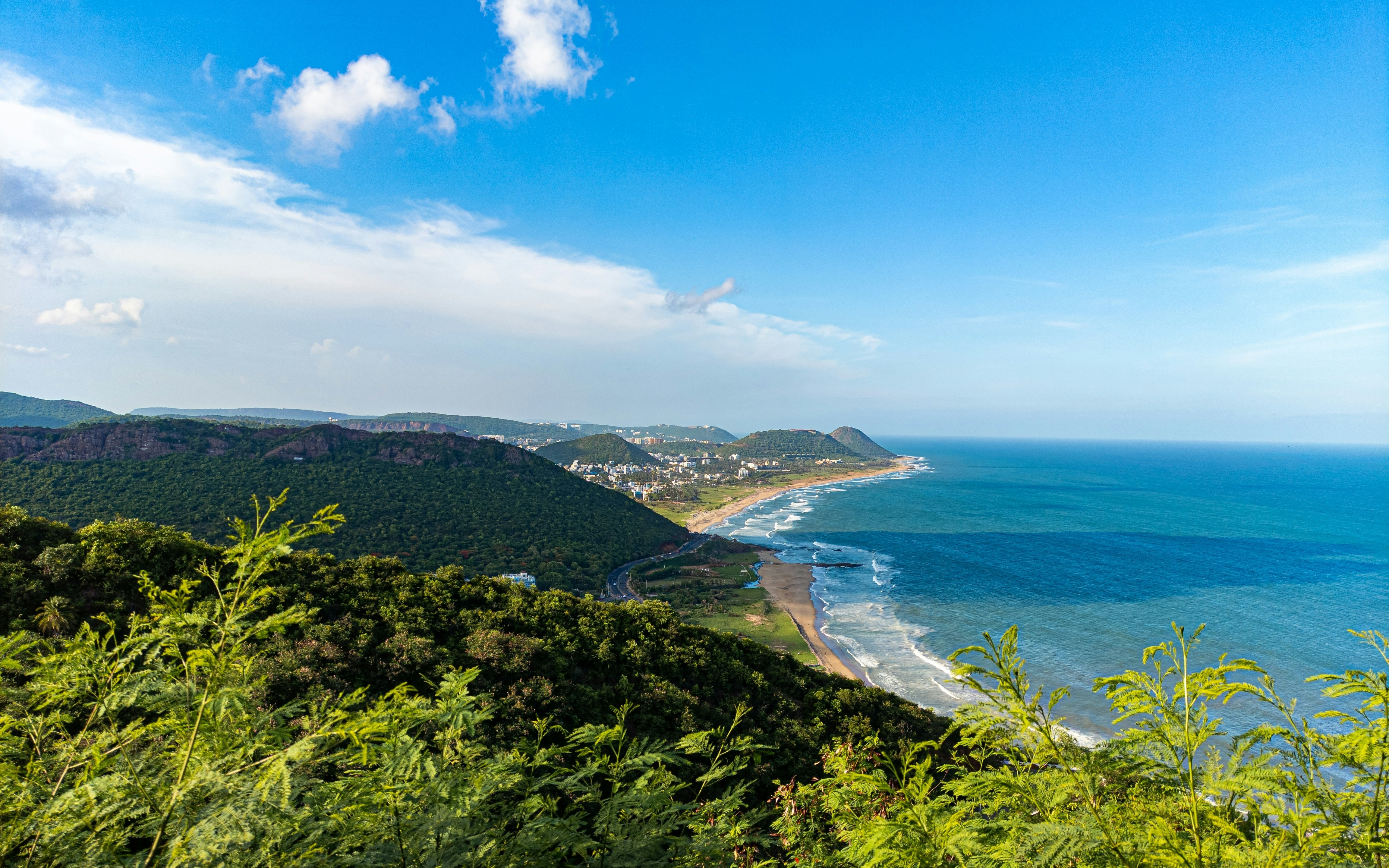
Visakhapatnam (Vizag), Andhra Pradesh
Just an hour north of Visakhapatnam, Malibupeta beach has quietly become one of India’s best spots for beginner and intermediate surfers. Thanks to the year-round mellow waves shaped by hills that flank the shoreline, they are slow and forgiving. The outer section works for both shortboards and longboards, while the inside stretch rolls into a perfect longboard wave.
Early mornings see a mix of local students, naval officers and travelers hitting the water, with a small fishing village adding to the sense of place. Park at the village edge and paddle straight out. The best time to surf is from February to October (with August at its peak), though beginners should aim for October until March.
Where to try it: Vizag Surf Club, founded in 2010, runs daily lessons as well as 3–5 day courses and offers surfing equipment. While stays are capped at about a week, Zostel in the city center is a reliable base until the club opens its own accommodation.
Little Andaman, Andaman Islands
Craving remote waves and total solitude? Little Andaman is where adventure junkies go to escape the crowds and chase powerful reef and point breaks in their rawest form. The highlight is Butler Bay, a world-class left-hand reef break that delivers strong, hollow waves. If it’s the variety you’re after, Kumari Point’s punchy point breaks don’t disappoint. Reef shoes are essential to protect your feet from sharp coral, and high-volume boards are your best bet to handle the inconsistent swell.
When not surfing, the island dazzles with dense rainforests, pristine white beaches, and the rare chance to spot marine turtles gliding by. It is advisable to plan your visit between April and October, when the swells are epic and the island’s wild side is calling.
Pro tip: Bring everything you need – your board, reef shoes, snorkel and a sense of adventure. There are no vendors or surf schools ready to hand you gear, unlike in Port Blair and Havelock Island. Here, it’s pure, unsupervised wave chasing.
Is it better to rent or buy surf gear?
Surfboards don’t come cheap in India, thanks to high import duties and a tricky exchange rate. To tackle the cost and grow local expertise, Aussie surfer Dave Hearns set up Temple Surfboards in Mamallapuram about a decade ago. His workshop trained local fishers and surfer Santosh Moorthy, who became one of India’s first homegrown board shapers.
In 2014, Nicola Erni of Erni Surfboards and Samai Reboul of Kallialay Surf School followed suit, starting their own shaping workshops to support the growing surf community. Customs boards are available to purchase on order. Now, more locally made boards are giving surfers a budget-friendly and sustainable alternative to imports.
Depending on your itinerary and the time of year, weigh your options between renting or buying. While India’s surf scene is still in its infancy, gear is increasingly easy to find at popular surf outposts.
What's the best way to transport surfboards?
If you're flying, always check airline policies on board size and fees before your journey to avoid last-minute surprises.
If you’re road-tripping in a van, pack as many as you can fit. A reliable daily driver will handle most beach breaks, but if you’re chasing bigger waves, it’s wise to bring an extra board or two. Think about the types of waves you want to surf and pack accordingly – two or three boards should cover most bases.
Can’t be bothered lugging your own? Most surf spots now offer board rentals, making life easier (and lighter).
What other gear do I need for surfing in India?
Keep it simple but smart. A rash guard to protect you from possible rashes due to contact with the wax on surfboards, reef boots and beachwear are essentials – think boardshorts, bikinis, sunglasses and a surf poncho. Don’t forget a lightweight, quick-dry towel, reef-safe sunscreen, and a reusable water bottle to stay eco-friendly. Soft racks make board transport a breeze, while a surf repair kit and basic first-aid supplies will save your session from going sideways. Round it off with a sturdy surfboard bag, dry bag, and all your travel documents. Don't forget to check your travel insurance situation, because life’s more fun when you’re covered.
Are there any surf safety tips?
Never hit the waves alone – many beaches don’t have lifeguards, so a buddy is a must. Beginners should stick to larger, stable boards and gentle beach breaks, avoiding spots with strong currents or big waves. Always go for reef-safe sunscreen, sunglasses, and stay hydrated under the intense sun.
It’s worth taking lessons from certified instructors, who’ll help you navigate local conditions and provide the right gear. And before you paddle out, always check the day’s wave size and weather forecast.
What's the best way to get to surfing destinations in India?
Most surfing destinations are well-connected by flights, trains and buses. If you’re planning to hit multiple spots and traveling with your own gear – especially surfboards – it’s worth considering a car rental for added convenience.








